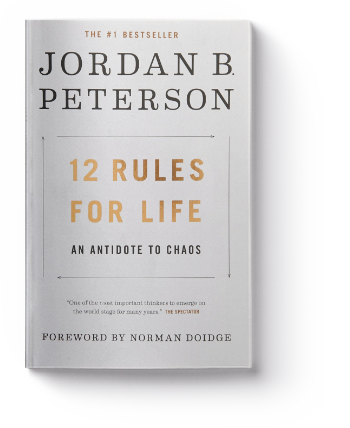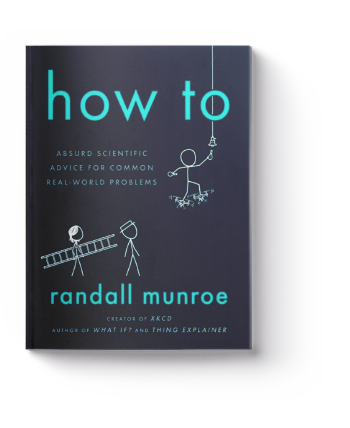Whether it’s fiction, politics, history, or science, Libri is keeping a keen eye on what’s trending in the world. Based on the well-renowned best sellers lists of The New York Times, each month we are assembling a selection of those books which claim their prominent positions, and which we believe will capture the imagination of Hungarian readers as well as expatriates and travelers staying in the country.
Rory Power: Wilder Girls
A mysterious virus attacks the inhabitants of an all-girl boarding school located on a remote island. Some kids die, some are forever changed, along with the wildlife surrounding them, and while the government is trying to find a cure, the students are left to their own devices to stay alive. Rory Power’s debut novel is a welcome addition to the YA horror scene that is somewhat fluctuating in quality. The book has been called the 21st century female version of William Golding’s classic, Lord of the Flies, and not without reason. However, while Golding’s masterpiece is an allegory of political and social power-struggles, and individuals’ self-proclaimed or earned place in society, Wilder Girls is a less politically motivated, but more brutal and gory coming-of-age story.
Másfél évvel azután, hogy a Raxter Lányiskolát egy rejtélyes vírus támadta meg, az intézménynek otthont adó szigeten a tanulók még mindig magukra vannak utalva, és arra várnak, hogy valaki odaát, a vízen túl kifejlessze a betegség gyógymódját. Addig azonban egymással és egyre vadabbá váló környezetükkel is meg kell küzdeniük. Sokan meghaltak közülük, és az életben maradtak sem lesznek már soha azok, akik a járvány kitörése előtt. Rory Power bemutatkozó regényét sokan nevezték William Golding klasszikusa, A legyek ura modern átiratának, nem is teljesen ok nélkül. Az 1954-es regény politikai és társadalmi allegóriája helyett azonban itt egy húsba vágó és szívbe markoló ifjúsági horrort olvashatunk.
A. J. Finn: The Woman in the Window
An agoraphobic, alcoholic woman, trapped inside her apartment passes her days by watching her neighbours. She is living her life through them, but they may also cause her death in the end. It starts with a scream, and ends in a total annihilation of what Anna had thought of as reality. The author of Gone Girl, in his latest psychological thriller employs an unreliable narrator, which has always been one of the top shelf tricks among the authors in this genre. Just like Anna, we can never really be sure what we see or hear, and the suspense built up by this ambiguity reaches its climax that is crafted with precision.
A. J. Finn magabiztosan emelkedik ki a pszichológiai thrillerek szerzőinek új nemzedékéből. Legújabb regényének elbeszélője egy agorafóbiás, alkoholista nő, aki közel egy éve nem tette ki a lábát a lakásából, és a napjait azzal tölti, hogy a szomszédait nézi ablakából. Rajtuk keresztül él, de könnyen lehet, hogy végül miattuk kell meghalnia. Anna rémálma egy sikítással kezdődik, amit az egyik szomszédos lakás felől hall, ám ez még csak a vég kezdete. A szerző tökéletes ütemérzékkel adagolja a feszültséget és a bizarr információmorzsákat, míg végül – Annával együtt – mindent meg kell kérdőjeleznünk, amit a valóságról eddig tudtunk.
Lisa Wingate: Before We Were Yours
Based on real events, Lisa Wingate’s book opens up a deep, dark and disturbing pocket in the history of a post-depression Tennessee, where thousands of children were kidnapped, tortured and molested, before being practically sold to rich families. As many hostorical fiction pieces these days, the book employs a historical and a modern-day narrator, gradually bringing them closer and closer together, until, in the end, we see their two stories join up, and we learn to appreciate the fact that sometimes, under the right circumstances and with some determination, we can make sense of the past, which had seemed elusive, and completely out of our reach before.
A történelmi regények reneszánszukat élik a nyugat-európai és az
amerikai irodalomban. Főleg azok a könyvek, amelyek nem egy-egy ország
nagypolitikájának kulisszái mögé vezetik be az olvasót, vagy a
történelmi léptékű események emberi aspektusait domborítják ki – ezek
főleg a műfaj 20. századi képviselőinek volt erőssége. Napjaink
történelmi regényei általában a múlt egy-egy elfeledett, sötét sarkába,
ismeretlen zugába kalauzolnak el minket. Ilyen Lisa Wingate regénye is,
ami megtörtént eseményeken alapul, és ami a 30-as/40-es évek egyik
legkegyetlenebb amerikai bűnszervezetének bugyrait tárja fel nekünk. A
nyolcvan évvel ezelőtti események elbeszélője mellett megjelenik egy
narrátor napjainkból is, és a két történetszál végül találkozik, azt
sugallva, hogy megfelelő kitartással megérthetővé és feldolgozhatóvá
válnak a legsötétebb történelmi traumák is.
Jordan B. Peterson: 12 Rules for Life
Jordan Peterson is one of the most influential public intellectuals of the past few years. His appeal is mainly due to his views being seen by some as the antithesis to the overly liberal discourse dominating the western hemisphere. While bearing a title that could be construed as the label on yet another self-help book, it is much more than that. The book does not only lay out a dozen rules, instruct us to live by them and explain why. It also puts human behaviour into a biological and cultural context, delving deep into our nature, the discrepancies between our needs, desires and reponsibilities, and provides a thorough understanding of ourselves as part of a society that we can make better with all of our actions, however small they seem at first.
Jordan Peterson a nyugati világ egyik legmegosztóbb értelmiségi figurája napjainkban. A 12 szabály az élethez a tőle megszokott, esetenként nyers stílusban íródott, és csak első látásra tűnhet egyszerű önsegítő kötetnek. Valójában olyan mélyreható kultúrtörténeti, pszichológiai és evolúcióbiológiai kutatások alapján feltárt szabályszerűségek gyűjteményéről van szó, amelyek belátása és alkalmazása segíthet minket abban, hogy az arany középúton maradjunk, és a mindennapokban sikeresen egyensúlyozzunk az anarchia és az önkényuralom közötti vékony határmezsgyén. Középpontjában az egyén áll, alaptézise, hogy a jól működő közösségek alapja nem a közös identitás és az ideológia, hanem az egyén önmagáért és közvetlen környezetéért vállalt felelősségérzete.
Randall Munroe: How to
At first sight, How to appears to be a goofy take on everyday objects and problems, instructing the reader on how to tackle problems in the most counterproductive way. But readers of the author’s previous hit, What if?, will realise that there is much more going on beneath the surface. While sifting through the increasingly silly ways to handle everyday challenges, like crossing a river (boil its water) or telling your own age (measure the racioactivity of your teeth), we are slowly introduced to pieces of knowledge that are genuinely interesting and help us understand the world we live in. Like coating medicine into sugar, Randall Munroe manages to make swallowing hard scientific facts easy and enjoyable.
Aki olvasta Randall Munroe előző sikerkönyvét, a Mi lenne, ha? című ismeretterjesztő kötetet, az sejtheti, hogy a szerző legújabb munkájában is képes ámulatba ejteni a tudomány világában laikusként mozgó olvasót. Bizarr gondolatkísérletek és egyszerű válaszokra adott bonyolult kérdések követik egymást a könyvben – megtudhatjuk például, hogy miként a legkomplikáltabb átkelni egy folyón, vagy megállapítani saját életkorunkat. A sziporkázó humor mögött azonban egy nagyon is megalapozott tényanyag húzódik, amit Munroe ötletes pedagógiai módszerének köszönhetően játszva sajátíthatunk el. Cukorkába rejtett gyógyszerként adagolja nekünk a természettudományos tényeket és adatokat, mi pedig a szórakoztató körítés miatt könnyedén és élvezettel faljuk őket.











